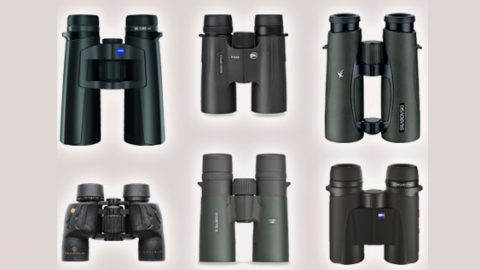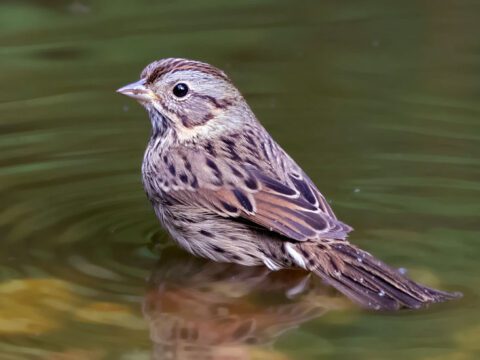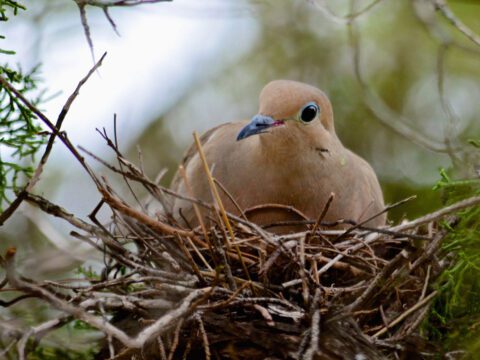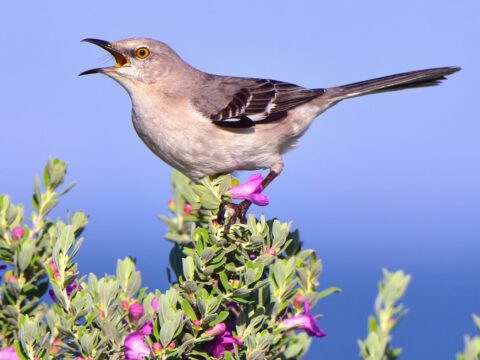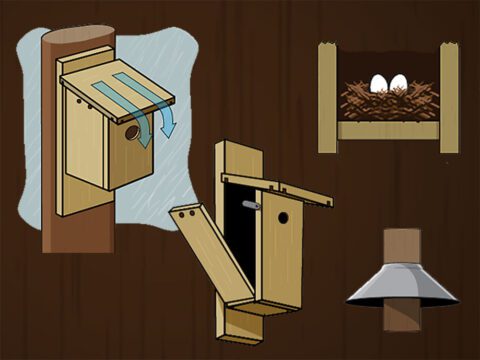The Lasting Legacy of Ted Parker
By Tim Gallagher
October 15, 2013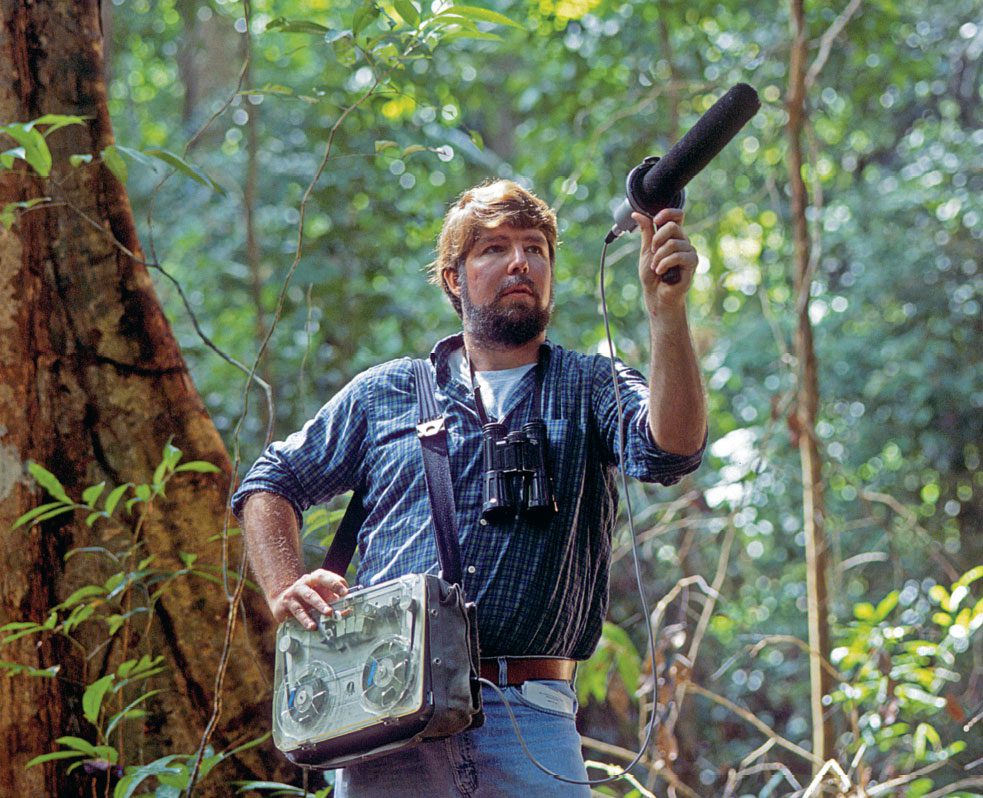
August 3, 2013, marked the 20th anniversary of the death of Theodore A. Parker III, who is widely regarded as one of the greatest field ornithologists who ever lived. A dedicated conservationist, he died in a plane crash while surveying a remote cloud forest in Ecuador.
It is difficult to capture the essence of a person like Ted Parker in the brief space of a magazine article. In so many ways, he was larger than life, and his passing has left a void in the field of ornithology—and in the lives of those he touched. I’ll never forget the shock I felt when I heard he had died. Although I’d known him for barely three years, Ted had a way of connecting with people quickly and intensely, and inspiring them to strive harder and accomplish more in their time on earth. There was so much to be done—so many vital places to save.
Only 40 years old at the time of his death, Ted was a specialist in the birds of South America and spent the bulk of his adult life working in the tropical rainforests of Peru, Brazil, Bolivia, Ecuador, and other countries in the region. He had a phenomenal ability to remember wildlife sounds and could instantly identify more than 4,000 bird species by their songs Two decades after the death of this legendary field ornithologist and conservationist, his legacy lives on in the places he helped save, the research he accomplished, and the people he inspired alone. He made high-quality sound recordings of wildlife wherever he traveled, and he always wrote meticulous field notes to accompany them. I spoke with several of Ted’s close friends at the Cornell Lab of Ornithology while writing this article.
“The thing that inspired me most about Ted Parker was his intense focus,” says Ken Rosenberg, a conservation biologist at the Cornell Lab. “It was like he was on a heightened plane of awareness. The first time I went out on a trail with him, we were in a Bolivian rainforest, and I was trying to learn the foraging behavior of the birds I was studying for my doctoral dissertation. At one point, he stopped on the trail and started dictating notes into his microcassette recorder, noting the names of birds and descriptions of behaviors. I was looking up with my binoculars and trying to see what Ted was describing, and I couldn’t see anything. And then I realized he was looking up beyond the leaves I could see, beyond the branches, way up to the upper canopy. His example taught me to look to that other plane, to look through the branches and leaves and really see details I hadn’t noticed and most people wouldn’t see at all.”
Ted was an amazing person right from the start. Even as a child, he knew he wanted to be a naturalist and spent countless hours exploring the woods and fields around his home in Lancaster, Pennsylvania. He was an avid birder in elementary school, and a few years later, in 1971, during his last semester of high school and first semester of college, he did a big year, tallying 627 species in a single year, smashing the existing big-year record of 598 species.
Greg Budney, curator of the sound collection at the Cornell Lab’s Macaulay Library, credits Ted’s early blossoming to a supportive family. “Ted’s mother would take him out and let him run in a patch of woods for hours as she sat there reading books,” he says. “She was there fostering him—not by taking him and teaching him the names of birds, but by simply letting him explore for himself.”
Ted Parker’s importance in shaping the vision and direction of the Cornell Lab of Ornithology cannot be overstated. He was a prominent member of the Lab’s administrative board and pushed successfully for a stronger emphasis on conservation. He certainly influenced the direction of Living Bird. I first met him in early 1991, just a few months after I moved to Ithaca from California to become editor of the magazine. At that point, I’d only put out two issues. Ted was here to edit and catalog some new bird-sound recordings he was adding to the Lab’s sound archive. He sat in my office and basically took me to task for not doing more for conservation. I was taken aback. I told him I’d taken this job in the hope that I could do some good for wildlife conservation. And he said, “What are you waiting for?”
It was a point well taken, and by the end of our talk, I felt inspired. On the cover of the very next issue, I put the phrase “For the Study and Conservation of Birds” right under the Living Bird logo, just so no one would have any doubt about the magazine’s editorial mission, and I began publishing more articles on bird conservation. That was the kind of influence Ted had on people. “When he would meet someone, it was as though he was always sizing up the person’s potential—how we could all participate in this grand scheme to take care of the world’s threatened habitats,” says Budney. “I felt that impact myself. I was just a young sound technician in 1980 when I first encountered him, and he envisioned this role for me. ‘You need to do this,’ he would say. ‘You really need to think about this.’ I remember him giving me a copy of Robert Ridgely’s Birds of Panama. ‘This is how you start.’ He and I would work 14 to 16 hours a day, 7 days a week for as long as he was here, in a sound studio half the size of my office. I was always exhausted by the time he left but inspired to carry on.”
Ted invited Budney to accompany him on a life-changing expedition to Peru in 1985, where he had a chance to record bird sounds side-by-side with Ted. Budney felt Ted’s strong influence on all of his subsequent work.
“Ted was always very quick to encourage anyone who had similar interests to pursue their passion and shut out things that would interfere,” says Tom Schulenberg, a research associate at the Cornell Lab who did field work with Ted for years and was one of the coauthors with him on the Birds of Peru. “Oftentimes people might have a single meeting with Ted, but it would change the direction of their life. I know at least one person who lists his educational background as the University of Ted.”
Ted was a vital contributor to the Cornell Lab’s Macaulay Library (then called the Library of Natural Sounds) and helped build this sound archive into the world-class collection that it is today, adding some 10,000 recordings to the collection, representing more than 2,000 species of birds, mammals, and amphibians. “The body of work that Ted accumulated, the collections of bird songs and calls from across the American tropics, was a tremendous addition to the entire field of ornithology,” says John Fitzpatrick, director of the Cornell Lab of Ornithology.
Ted’s incredible capacity for remembering and identifying bird sounds made him a formidable researcher in the field. He was famous for finding birds far outside of their accepted range or locating species that had not been seen in 30 or 40 years or more. Because he was so good at identifying birds by sound, he knew which species were in a flock without even looking at them, so he could hone in on particular individuals and closely observe their behavior. “Is it foraging out near the end of a branch or closer to the trunk of the tree?” says Schulenberg. “Is it looking for insects from bare twigs? Is it hanging on vines? Is it picking food from the upper surface of a leaf? Or is it looking for something hidden inside a curled dead leaf trapped in the vegetation? All these minute details that other people were completely oblivious to, Ted was focusing in on and paying close attention to. It was not just a mass of detail he was storing in his brain, he was synthesizing all of this in the context of other birds he would have seen doing similar things in some other valley or halfway across the continent. “
Ted’s abilities so far outstripped those of his contemporaries that you could want to be like Ted, knowing that you would never have as much talent as he did,” says Schulenberg. “But, at the same time, it forced you to up your game, to be aware of what the possibilities were, and to expand your horizons—and to try harder.”
One of the remarkable things about Ted was that he did not have an advanced degree. After earning a bachelor’s degree, he headed to South America and spent most of his remaining years there. “He didn’t have time to go to school,” says Fitzpatrick. “He was out exploring, he was out learning, he was talking with people, actually having meetings with government officials and even heads of state to persuade them of the importance of preserving the natural areas on the eastern slopes of the Andes.”
Ted seemed to live his life at a frantic pace. On expeditions he would often stay up late into the night, assembling his notes, making sure all of his sound recordings were properly documented. “Besides Ted’s intensity in the field, there was this sense of urgency, as if he knew there was a limited amount of time not only to discover but to document what he was observing,” says Rosenberg. “Twenty years later, we still feel his loss. The Macaulay Library just recently completed digitizing and archiving Ted’s immense sound-recording collection. But we have volumes and volumes of Ted’s field notes that have not yet been transcribed, so there is still a huge body of knowledge that was in his head and that we still need to put into a form that can be used widely by scientists.”
Was Ted in a hurry because he knew his life would be short? Or was it the fact that he wanted to accomplish so much that even if he had lived to be 100 there would not have been enough time? Ted’s death was a devastating loss to the conservation community. He was a senior scientist at Conservation International at the time of his death and the leader of the group’s Rapid Assessment Program (RAP), which took a small team of top scientists to remote areas in the tropics that had never been biologically surveyed and determined their level of biodiversity and potential for conservation, accomplishing in a matter of days what previously might have taken individual scientists months or years. These areas often faced imminent environmental destruction, and it was always a race to save them. (This kind of rapid-assessment survey has since become a mainstay of conservation science.)
Ted Parker had a deep passion for conservation. With this, and his incredible drive and charisma, he made things happen. The RAP program was Ted’s brainchild, and he assembled its first team—which included legendary botanist Al Gentry, who died with him in the plane crash. Their initial expedition was to the Madidi region of Bolivia, on the eastern slope of the Andes, which turned out to be one of the most biologically diverse areas on the entire planet. In a face-to-face meeting with the president of Bolivia, Ted discussed the results of the RAP survey and stressed the importance of saving this unique area. As a result of Ted’s efforts, Bolivia established Madidi National Park, setting aside a staggering 4.5 million acres of tropical wilderness—an area the size of New Jersey.
Ted continued leading RAP team surveys, and he was on one—conducting an aerial survey of an Ecuadorian cloud forest—in August 1993 when the airplane crashed, killing him and three of his colleagues. Looking back on Ted’s brief life, we can only marvel at all he accomplished and draw inspiration from the example he set.

All About Birds
is a free resource
Available for everyone,
funded by donors like you
American Kestrel by Blair Dudeck / Macaulay Library
